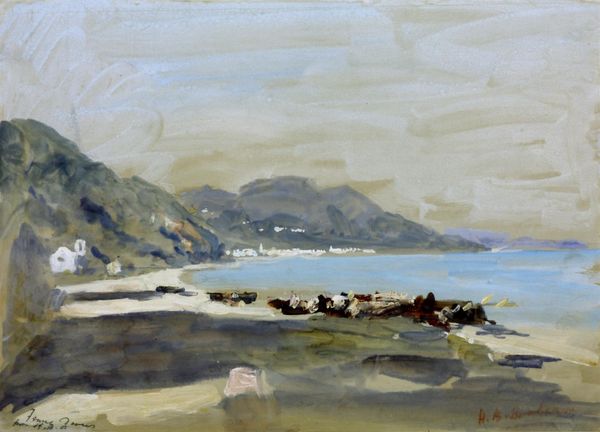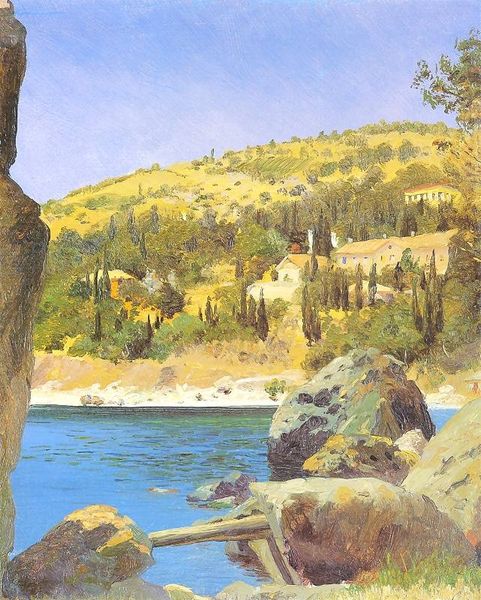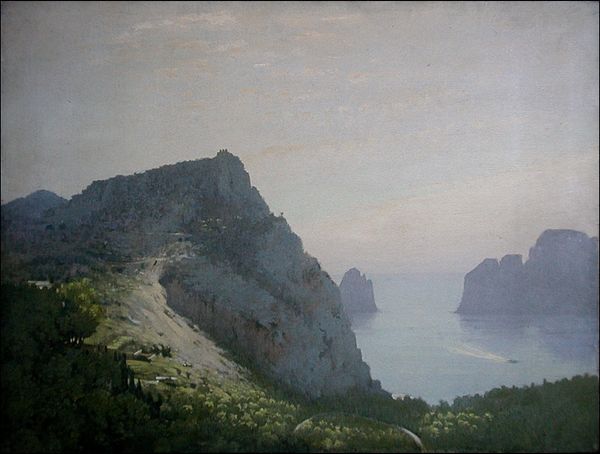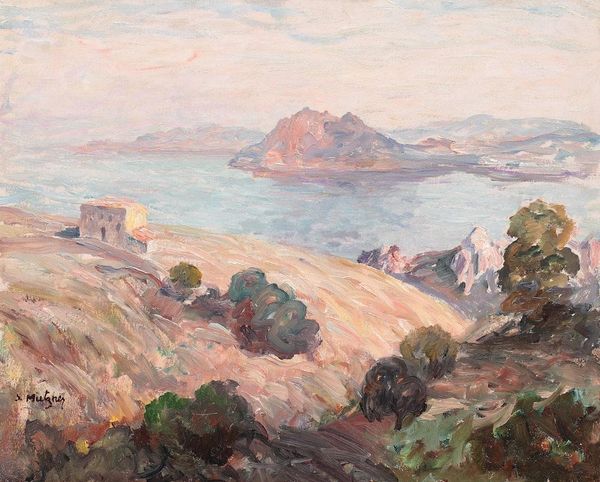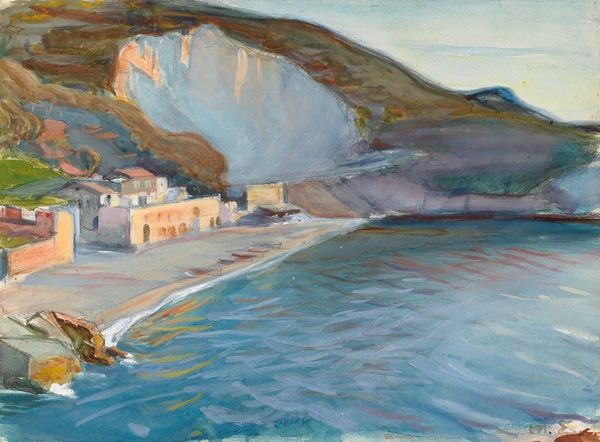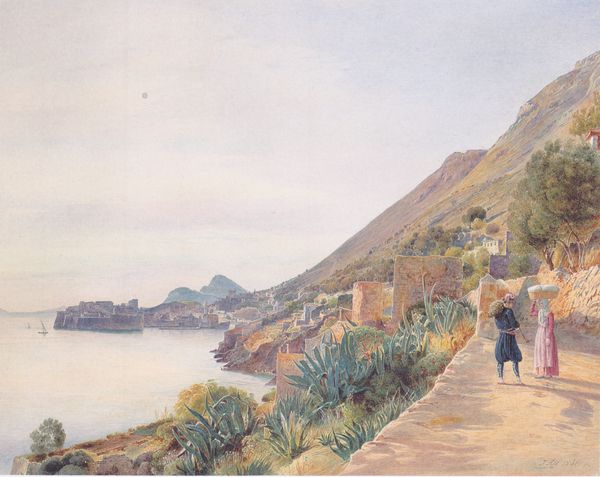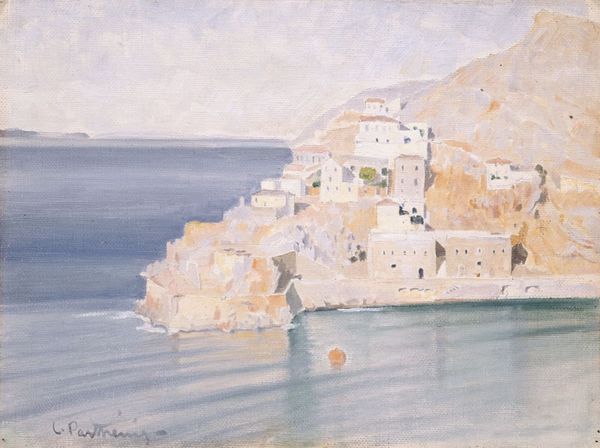
painting, plein-air, oil-paint
#
painting
#
impressionism
#
plein-air
#
oil-paint
#
landscape
#
impressionist landscape
#
oil painting
#
romanticism
#
cityscape
Copyright: Public Domain: Artvee
Curator: Looking at Alfred Stevens' oil painting, titled "Cap D’ail, Vue prise de Palais du Prince de Monaco," one can't help but immediately notice the subtle blending of tones, creating a dreamlike landscape. What are your first thoughts? Editor: The overall tonality definitely evokes a sense of calm and tranquility. There's something about the subdued blues and grays that makes the coastal scene feel very serene, almost melancholic. The sheer scale and almost brutal geological landscape clashes a bit with the Impressionist softness, though. Curator: It is crucial to note Stevens' connection to the plein-air movement here. There is a certain truth to representing and capturing the landscape on site with these colours. Also, you notice the small-scale buildings juxtaposed with such imposing and prominent natural landforms. I would encourage us to remember the rise of the "Riviera," a place to perform wealth at this time. How does this view then reflect ideals of progress, wealth, but simultaneously exploit it in representing these structures as rather delicate. Editor: That’s a fantastic point. Viewing it within that socio-economic context definitely shifts the perspective. We're looking not just at a landscape, but at a staged landscape—a backdrop for wealth and power. These seaside cities, were definitely symbols for elite performance. Curator: It also makes me consider ideas around gendered leisure, given his reputation in painting bourgeoise women within domestic interiors. The view onto the vista, now changes. This landscape almost becomes like an extension of a salon, something else for these women to perform in and with. What did the experience become, viewing and vacationing at such sights. I imagine, even from the Palais, this landscape has heavy connotations within artifice and power dynamics. Editor: Absolutely. Considering the rise of the tourism industry and leisure travel for women during that era, your point about gendered performance rings true. Stevens might be subtly critiquing the superficiality inherent in the performative wealth. Curator: Thinking of the city's politics and who and what it enables for the region at this moment is certainly critical when encountering this vista from the Prince's palace. I'm struck how the social undercurrents enhance one's observation and engagement. Editor: It really changes my view from a simple, somewhat subdued landscape to something more pointed and socially aware. I see that performance a lot clearer now.
Comments
No comments
Be the first to comment and join the conversation on the ultimate creative platform.
